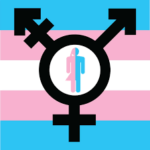The journey of transitioning from male to female can be one of the most transformative experiences in a person’s life. For many transgender individuals, this journey is not just about physical changes but also emotional and psychological growth. The process encompasses various stages, each with its unique challenges and milestones. In this article, we will explore what it means to transition from male to female, outlining the important steps and experiences that shape this journey. From hormone therapy to embracing a new look, we’ll cover it all.
Understanding the Journey: Transgender Male to Female Transition
Transitioning from male to female is a deeply personal experience that can involve a combination of medical, social, and psychological changes. It’s important to note that every person’s journey is unique; there’s no one-size-fits-all path. For some, the transition may begin with self-acceptance and understanding their gender identity, while for others, it might start with practical steps toward physical changes. The journey often includes navigating societal perceptions and personal desires, which can be both empowering and daunting.High Estradiol In MenTarget Tissue Of Estrogen
Embracing this journey means accepting yourself for who you are and acknowledging the sometimes complicated feelings that arise. This process may involve questioning societal norms, dealing with internal conflicts, and ultimately finding the courage to live authentically. The goal is to align one’s outer appearance with their inner identity, leading to a more fulfilling life.
The First Steps: Deciding to Transition and Finding Support
The first step in the transition journey is often the most challenging: making the decision to transition. This involves a deep introspection and often a period of exploration to understand one’s gender identity. Many individuals may feel a sense of gender dysphoria, a feeling of discomfort or distress that arises from a mismatch between one’s assigned gender at birth and their true identity. Finding the courage to take that first step can be overwhelming, but it’s crucial to remember that you’re not alone.
Support networks play an essential role during this initial phase. Connecting with friends, family, or support groups can provide the understanding and encouragement needed to navigate this complex journey. Many find solace in online communities where they can share experiences and seek advice from those who have walked a similar path. A therapist knowledgeable about transgender issues can also offer guidance and support as you begin to embrace your true self.
Hormone Therapy: What to Expect and How It Changes You
Hormone therapy is often a significant part of the male-to-female transition process. This involves taking estrogen and, in some cases, anti-androgens to help feminize the body. While the physical changes can be gradual, they can have a profound impact on how individuals perceive themselves and how they are perceived by others. Over time, hormone therapy can result in breast development, softer skin, and redistribution of body fat, among other changes.
Expectations during this phase should be realistic, as hormone therapy can take months or even years to produce noticeable results. It’s also important to have regular check-ups with a healthcare provider to monitor progress and adjust dosages as needed. Many experience an emotional shift as well, feeling more aligned with their identity and experiencing a greater sense of well-being. This is a time of significant change, and it’s perfectly normal to experience a mix of excitement and anxiety.
Top Surgery: A Key Milestone in the Transition Process
For many transgender women, top surgery is a pivotal step in their transition. This surgical procedure involves breast augmentation and is often sought after to achieve a physical appearance that aligns with one’s gender identity. Women may feel that having breasts is a crucial aspect of their femininity, and top surgery can lead to a dramatic increase in confidence and self-esteem.
As with any surgery, it’s important to conduct thorough research and choose a qualified surgeon who specializes in transgender procedures. The recovery process can vary, and it’s essential to follow post-operative care instructions. Many individuals report feeling a sense of relief and happiness after surgery, as they can finally see their body reflect their true self. This milestone can significantly change how a person feels in their own skin, marking an important point in their transition.
Voice Training: Enhancing Your Voice for Authenticity
Voice training is another important but often overlooked aspect of transitioning. Many transgender women seek to modify their voice to align with their gender identity, as voice can play a crucial role in how one is perceived socially. Professional voice coaches or speech therapists who specialize in transgender voice training can help individuals learn techniques to achieve a more feminine pitch and resonance.
Practicing voice modulation, intonation, and speech patterns can significantly enhance the overall communication experience. While it may feel challenging initially, many find that with consistent practice, they can achieve a voice that feels authentic to them. This step can be incredibly empowering, as it allows individuals to express themselves more fully and confidently in social situations.
Embracing Your New Look: Fashion and Style Tips
As you transition, embracing a new look can be one of the most exciting aspects of the journey. Fashion is a powerful form of self-expression, and many find joy in exploring new styles that reflect their identity. Whether it’s experimenting with clothing, makeup, or hairstyles, this is your chance to showcase who you truly are. Don’t hesitate to try different colors, cuts, and styles to find what makes you feel most comfortable and confident.
Finding clothing that compliments your body shape can be empowering, whether it’s flowy dresses, fitted tops, or accessories that express your personality. Online resources, fashion blogs, and even Pinterest can serve as inspiration as you curate your wardrobe. Remember, fashion is about feeling good in your skin, so choose outfits that resonate with your unique vibe. Embrace the journey of self-expression and allow your style to evolve as you continue to grow into your authentic self.
Navigating Social Changes: Relationships and Acceptance
Transitioning can bring about significant social changes, impacting relationships with friends, family, and colleagues. While some may be supportive, others may struggle to understand or accept the transition. Open communication is vital during this time. Sharing your experiences and feelings with loved ones can foster understanding and acceptance, but it’s also essential to prepare for varied reactions.
Building a supportive community is crucial. Surround yourself with individuals who uplift you and respect your identity. This may mean seeking out LGBTQ+ groups or finding allies who understand your journey. Remember that it’s okay to distance yourself from those who are unsupportive or harmful. As you navigate these changes, focus on cultivating relationships that nurture your growth and authenticity.
Life After Transition: Living Authentically as Yourself
Life after transitioning can feel liberating but may also come with new challenges. The goal of transitioning is to live authentically, and many transgender women report a newfound sense of joy and fulfillment once they embrace their true selves. This stage often involves integrating your new identity into everyday life, from social interactions to professional settings.
Adjusting to life post-transition may take time, but embracing your authenticity can lead to deeper connections and a richer life experience. Many find joy in participating in LGBTQ+ events, advocacy, and community building. Living authentically is about celebrating who you are and encouraging others to do the same. As you continue on this journey, remember that your story is unique, and your experiences are valid.
Transitioning from male to female is a multifaceted journey filled with ups and downs. Embracing your true identity can lead to a more fulfilling and happy life. Each step, whether it’s hormone therapy, surgery, or personal style changes, is a testament to your strength and resilience. By sharing your experiences and connecting with others, you can find community and support along the way. Remember, you are not alone, and your journey is one of empowerment and authenticity. Celebrate each milestone, and always strive to live as your most genuine self.


